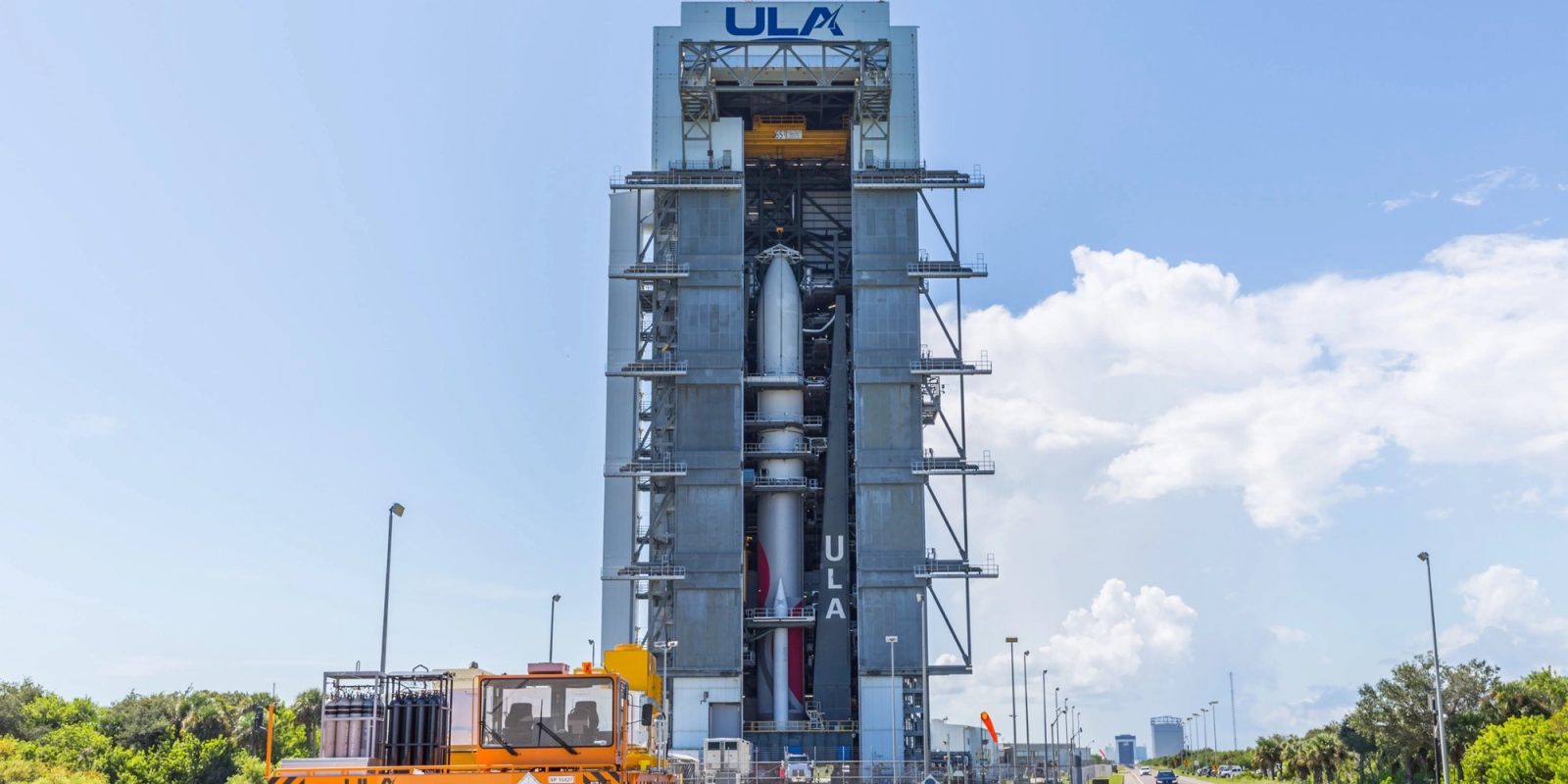
ULA finished assembly of its second Vulcan rocket at its Vertical Integration Facility at Cape Canaveral Space Force Station last week. The rocket is finishing up final checks before launching an important second certification mission for the U.S. Space Force.
On September 21, ULA teams finished stacking the second Vulcan rocket the company has made at its integration facility not far from its launch site at Cape Canaveral. The dummy payload, which is replacing the Sierra Space Dream Chaser Spaceplane, encapsulated in its payload fairings, was hoisted up and stacked on top of its Centaur V upper stage.
Cert-2, as the mission is called, is the follow-up from Cert-1 that launched in January of this year. It will be the second certification mission for the US Space Force, in hopes to move on to launching national security space missions for the U.S. Government.
This mission will fly the dummy payload and its Centaur stage out of Earth’s orbit and into a solar orbit, where it will stay for likely hundreds, if not thousands, of years. This will test the Centaur V’s ability for longer-duration missions and the ability for Vulcan to fly scientific payloads on interplanetary trajectories.
ULA is in the process of switching from the historic Atlas V rocket to its Vulcan rocket for all missions. The move will remove the US reliance on Russian-made engines and hopefully increase ULA’s competitiveness with SpaceX.
To replace Russia’s engines, ULA partnered with Blue Origin to provide its methane-fed BE-4 engines to the booster. That booster will be assisted with up to six Northrop Grumman GEM-63XL solid rocket motors. The upper stage is an improved Centaur stage that now has two Aerojet Rocketdyne RL-10 engines as standard.
ULA’s Cert-2 mission is now scheduled for an October 4 liftoff. With the rocket now fully assembled, final integration checks are being finished up, and then ULA will move the rocket to SLC-41 for a pre-launch dress rehearsal.
After completing this launch, ULA is hoping to be granted a quick certification to launch two national security missions, USSF-106 and USSF-87, by the year’s end.
FTC: We use income earning auto affiliate links. More.



Comments